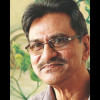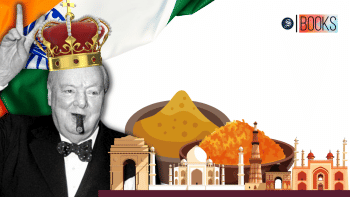Alternative routes

An advance copy of this book reached me several months before its release last year. I have read it with interest and admiration, and I had meant to review it promptly, yet it has taken me more than a year to get down to it. One reason is that the book is based on an unorthodox take on some of the key issues in literary discourse today. These issues intrigue me but I have not yet formulated any clear-cut views regarding them. My comments on the book must consequently be provisional.
Ian Almond is a professor of world literature, which he describes as a "nebulous entity", before going on to parse the debates around it in his theoretically dense Introduction. The contentious issues spring from the European provenance of the subject. Goethe, who first broached the concept of world literature in his conversations with Eckermann, was a European looking out with curiosity for the literary works of far-flung lands–he was at that point reading Chinese novel–but only to reaffirm the absolute value of the Greek classics; by contrast the exotic works of "world literature" had to be examined historically: a distinction interestingly analogous to Matthew Arnold's distinction between "historic estimate" and "real estimate".
Not long after, Marx and Engels in their famous Manifesto claim that capitalism has affected intellectual production, forcing national and local literatures to make way for world literature. But the spectre of Eurocentrism haunts their ideas as well, since capitalism and its radical critique too are European in origin.
In any case, world literature would remain an abstraction, a spectre haunting critical discourse but without a locus in academia, until the sudden proliferation in this century of degree programmes in the subject (or in Global Literature, another term that has been floated to mean the same thing) in this century. Two developments prepared the ground for this: the emergence of comparative literature as an academic discipline and the rise of postcolonial literary studies.
An important landmark in South Asian critical discourse was a lecture delivered by Rabindranath Tagore in 1907. Asked to talk about comparative literature he chose instead to descant in his characteristic woolly metaphysical vein on world literature ("Bishwa sahitya") as a manifestation of "the universal being". Mercifully, no one to my knowledge has embarked on a project to study or teach literature in light of this.
Almond's title and subtitle loudly announce his key critical strategy; and it is further fleshed out by a qualified approbation of the postcolonialism-derived position of Aamir Mufti (Forget English!: Orientalisms and World Literatures, Harvard 2016) , and the post-structuralism oriented one of Emily Apter (Against World Literature: on the Politics of Untranslatability, Verso 2013). Almond shoots neat little darts at theorists like Dipesh Chakrabarty and Franco Moretti, but it is the popular journal, World Literature Today, that receives an extended barrage. In a couple of pages of bravura writing Almond lays bare the superficial ideological underpinnings of the journal, which he dismissively compares to "an in-flight magazine" whose critical orientation for all its "surface cosmopolitanism" is very western. Quoting with devastating effect a rather fatuous passage in an article on 21st century Delhi, Almond goes on to comment that it "exemplifies the aversion to any discussion of capitalism, violence and power in mainstream discussions of world literature today."
One can assume that Almond aims at a complexity and depth that is the opposite of what WLT purveys. He examines slices of world literature never before served between two covers. Something of a polyglot, he can read Turkish, Spanish and Bangla, and chooses his primary texts from Turkiye, Mexico and Bengal (West and East, but mainly the former). These are then marshalled under somewhat out-of- the-way thematic rubrics: The Ghost Story, the Hotel-Narrative, Femicide Narratives, Retelling Myth, Melancholy, and The Orient.
But what is the rationale behind the choice of these three regions, apart from the author's personal acquaintance with their languages? The aim is not "to define a 'true' essence of World Literature" but to offer "a usefully provocative alternative: a sequence of non-Western regions which might provide the basis for a fruitful rerouting of global literary conversations." Several commonalities are identified in the regions: encounter with Western imperialism; the existence of a dominant metropolis in each (Mexico City, Istanbul, Kolkata); debates over language; class struggles in various forms; and a tendency to marginalise certain voices (Mesoamerican; Kurdish and Armenian; Muslim Bengali writers).
One should not read too much into these commonalities, which are shared no doubt by many regions. Nor can one take comments about the traits of each region uncritically, at least not the ones about Bengal. It is not true that this region has not had a modern nation state all to itself, not since the birth of Bangladesh. The difference between Bangla Shadhubhasa and Chalitobhasa has nothing to do with the predominance of Sanskritized or Perso-Arabic diction; the former is the older and more formal written form; the latter is the "standard" spoken form. Rabindranath Tagore used both, switching to Chalitobhasa in his later phase. And the Naxalites were not a separatist movement, but wanted a Communist revolution in the whole of India.
But this is nitpicking, and should not detain us. The book as a whole is a rigorously pursued exercise in the close reading of a fascinating and diverse array of modern texts that aren't quite in the category of the canonical mainstream. Take the ghost-story. Many would consider it to be a minor or even sub-literary genre, like the detective story or erotica. Almond will convince them that it can have high literary significance; who in our age of solemn theorising can resist the suggestion that "the haunted places in our ghost stories are all chronotopes [a Bakhtinian concept] which refuse to be vanquished by history-dissolving modernity"?
Among the three hotel narratives dealt with is the popular Bangla novel Chowringhee by Sankar. The discussion is embedded in references to numerous other hotel narratives, which are a conspicuous manifestation of bourgeois capitalist modernity; earlier shelters for travellers, like inns and caravanserais, have a very different feel: they bring travellers together, while in the modern hotel "alienation is purchases by its guests." There is "a profound relationship between death and the modern hotel in literature", and this seems to follow naturally from the features Almond identifies in hotel narratives: "misogyny, Empire, history, melancholy and a paucity of religious reference."
The mood darkens further in the six femicide narratives, all incidentally by women, among them Mahasweta Devi's "Douloti" and "Stanyadini/The Breast Giver". The labyrinth of "Melancholy" that we enter in one chapter does not lighten the mood. The chapter on "Retelling Myth" ranges promiscuously over myriad texts, opening windows that, one hopes, will draw other researchers. The last chapter cannily reveals new facets of "The Orient", decoupling it from the binaries of the grand narrative of Orientalism. Even halfway through this series of intricate analyses one concedes that Almond has succeeded in decentering world literature, for the perspectives he opens up relegate the West/ Europe to the periphery.
But then one cannot help asking oneself if it isn't all sleight of hand. Well, suppose it is, but in that case, what has been elided to create the stage for such legerdemain? Luckily for us, Almond has left the clues in plain sight. In the introduction he notes the importance of "history and power" and drives home the point in a dynamic image: "Power ripples outward, and books and music and culture tend to ride out on those ripples from powerful countries to less powerful ones." If we can hope for something different, he concedes that "in the end, it may well be the changing format of geopolitical capital (the emergence of BRIC/MIST countries for example) that decenters the map of world literature far more effectively than any set of well-intentioned academics."
On first reading this struck me as a salutary acknowledgment of the cultural impact of power relations, but the overwhelming force of that impact was brought home to me in the months that followed (and that is another reason why this review has taken so long). The Ukraine war kicked in, and the comprehensiveness of its global repercussions became painfully palpable. The French anthropologist Emmanuel Todd famously makes the case that this is a world war. Professor John Mearsheimer in delving into its causes has also convincingly argued that world peace depends on the balance of power between contending hegemons. When an interviewer asked him what the weak and small countries could do in this situation, his answer was simple and blunt: "They have to suck up to the big powers."
I am still reeling from the cold shower of Mearsheimer's response. BRIC countries may succeed in making their presence felt on the global stage, but there will always be smaller nations who have to suck up to several contending big powers, both regional and global, desperately attempting a balancing act. How can someone living in such a hapless land be meaningfully productive in the realms of art, literature, culture–and not just be a "mimic man"?
I believe the first task would be to attempt a comprehensive understanding of the relationship between geopolitics and literature, art and culture. I pointed this out not long ago in a keynote address to a conference at East Delta University, Chattogram. But a lot of work needs to be done to flesh out the idea. Almond has given us a number of admirable books, The Thought of Nirad C. Chaudhuri; The New Orientalists; Islam in German Thought; Sufism and Deconstruction. His latest too opens fresh vistas in literary studies.
Kaiser Haq is a Bangladeshi poet, translator, essayist, critic and academic. He is the Dean of the School of English and Humanities, University of Liberal Arts Bangladesh (ULAB).

 For all latest news, follow The Daily Star's Google News channel.
For all latest news, follow The Daily Star's Google News channel. 












Comments